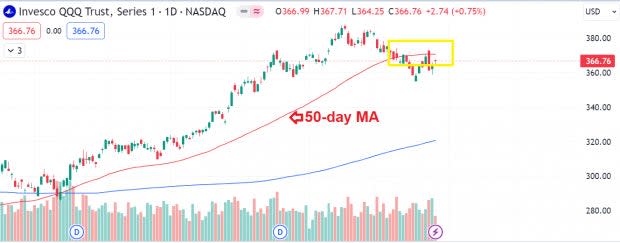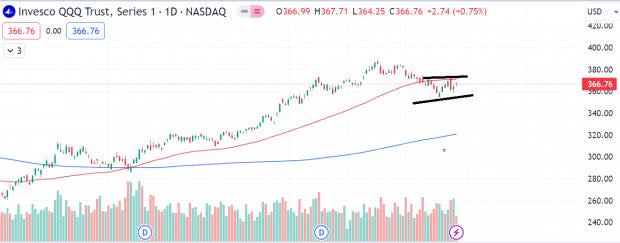3 Tips to Survive Choppy Markets
Sideways, choppy markets can be more detrimental to a trader than down-trending markets due to several factors that can make trading or investing difficult during these periods. In a now infamous quote, legendary speculator Jesse Livermore explained, “There’s a time to be long, a time to be short, and a time to go fishing.” While the quote is powerful, how does one know what type of market they are in? Below are 3 ways to identify a sideways, choppy market:
50-day moving average flattens: By examining the slope of the 50-day moving average, investors can determine the trend. A flat or near-flat 50-day moving average is a classic sign of a trendless market.

Image Source: TradingView
Defined price range: Even in the most robust trends, markets do not trend in the same direction daily. A trendless market typically has a defined trading range.

Image Source: TradingView
Dry up in volume: During the summer and around holidays, volume tends to fall off a cliff. Trends require either more buying pressure or selling pressure. When volume dips, trends are much less likely to develop.
Now that you know how to identify choppy markets, let’s discuss 3 ways to survive them:
Reduce Position Size: Excessive position size is akin to putting a dial on your emotions. Reducing position size can lead to better decision-making amidst volatile, choppy market action, thus limiting wild profit and loss swings.
Widen Risk % (not $ amount): Billionaire investor Paul Tudor Jones once warned, “You adapt, evolve, compete, or die.” If you are to thrive in volatile markets, it is best to reduce position size and widen risk. Doing this gives you a better chance to be correct on a trade while risking the same dollar amount you usually would. In other words, if you are positioned too large and get stopped out consistently, you will likely suffer “death by a thousand cuts.”
Limit your trading all together: Unlike poker, where you must pay an ante (forced bet) to see the next hand, traders benefit from the fact that they can wait for their proverbial market “pitch.”
Bottom Line
Unbeknownst to amateur investors, choppy/sideways markets can be the most detrimental. To survive a choppy market, investors should slow down their trading, limit their size, widen their percentage risk, and trade less.
Want the latest recommendations from Zacks Investment Research? Today, you can download 7 Best Stocks for the Next 30 Days. Click to get this free report

 Yahoo Finance
Yahoo Finance 